
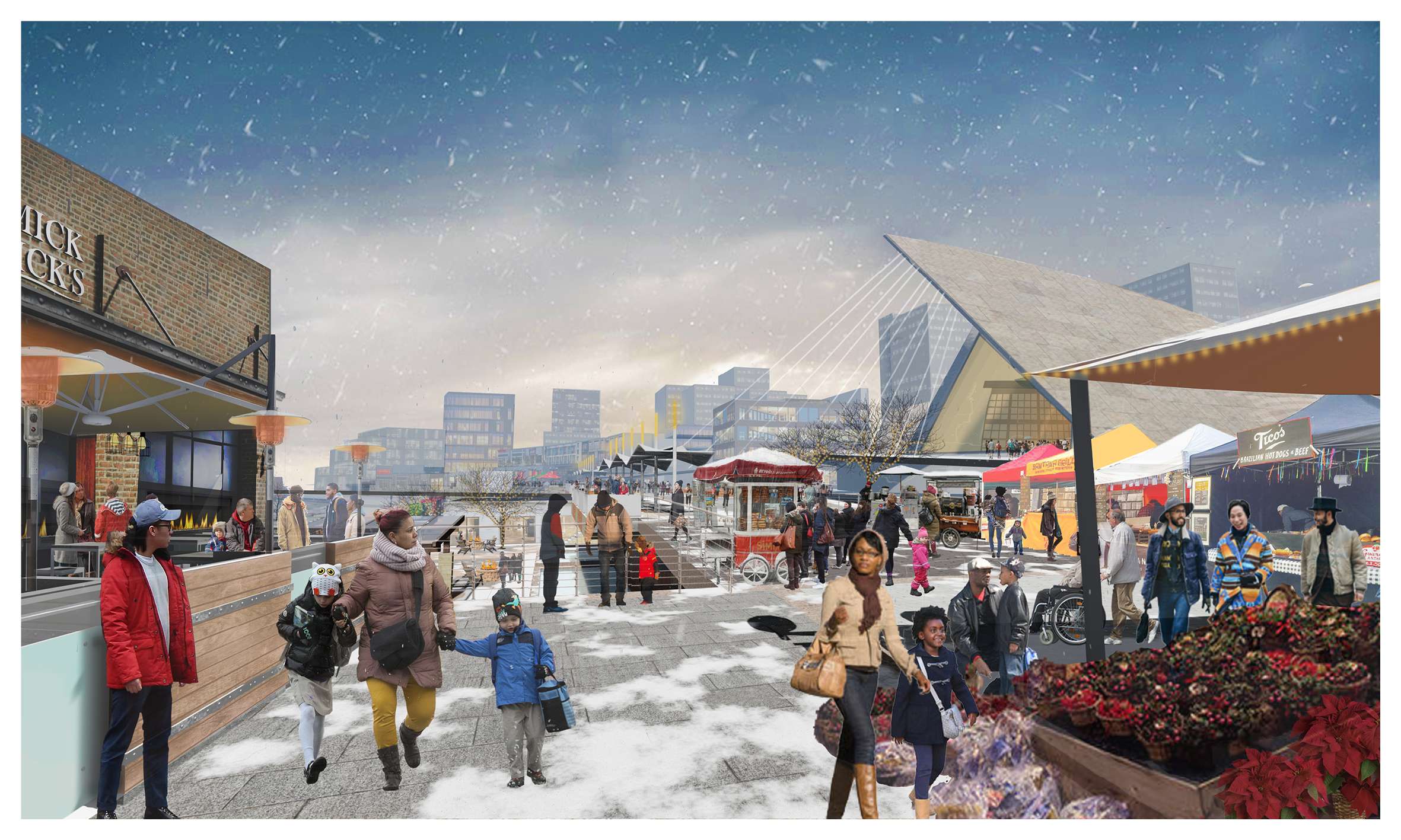
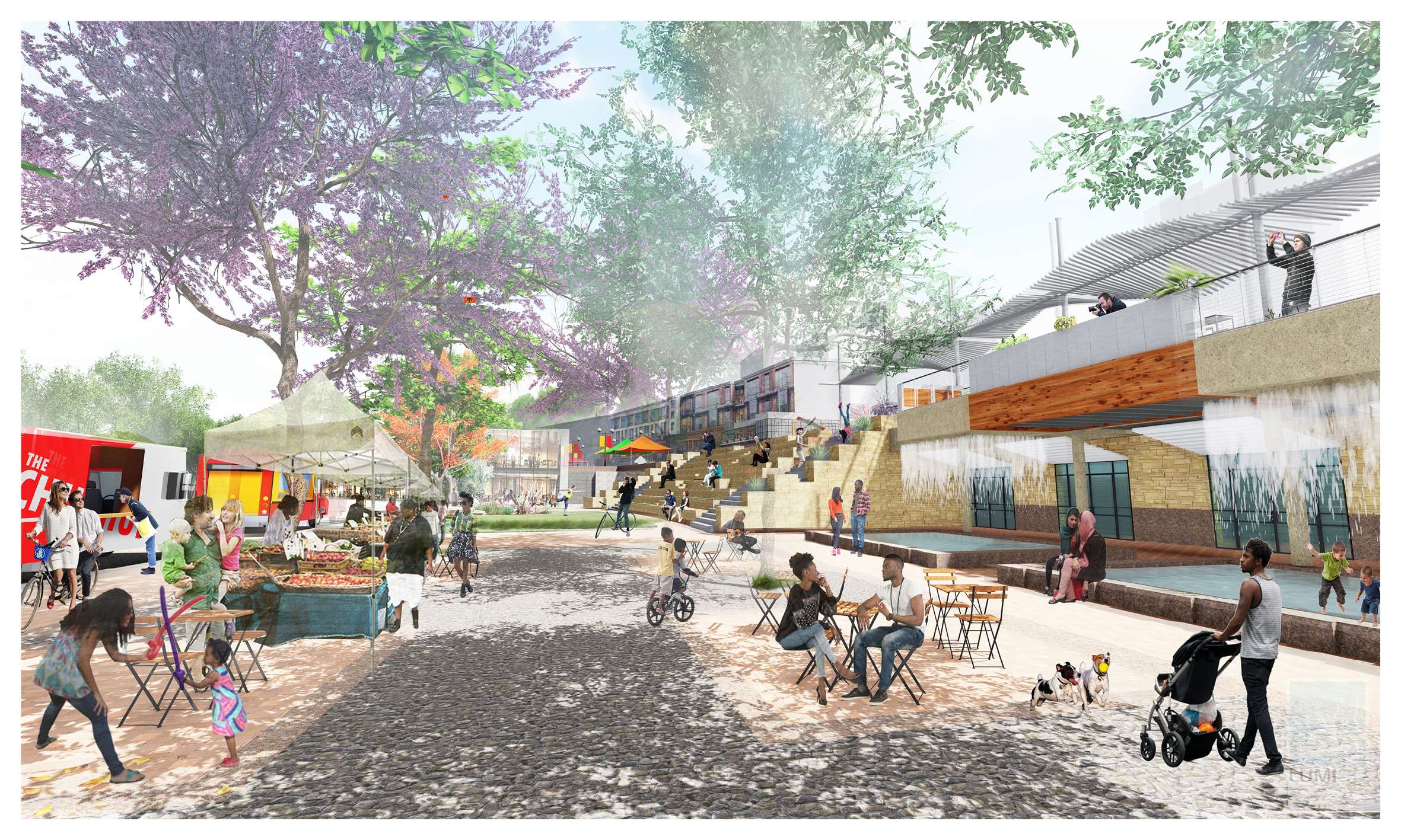
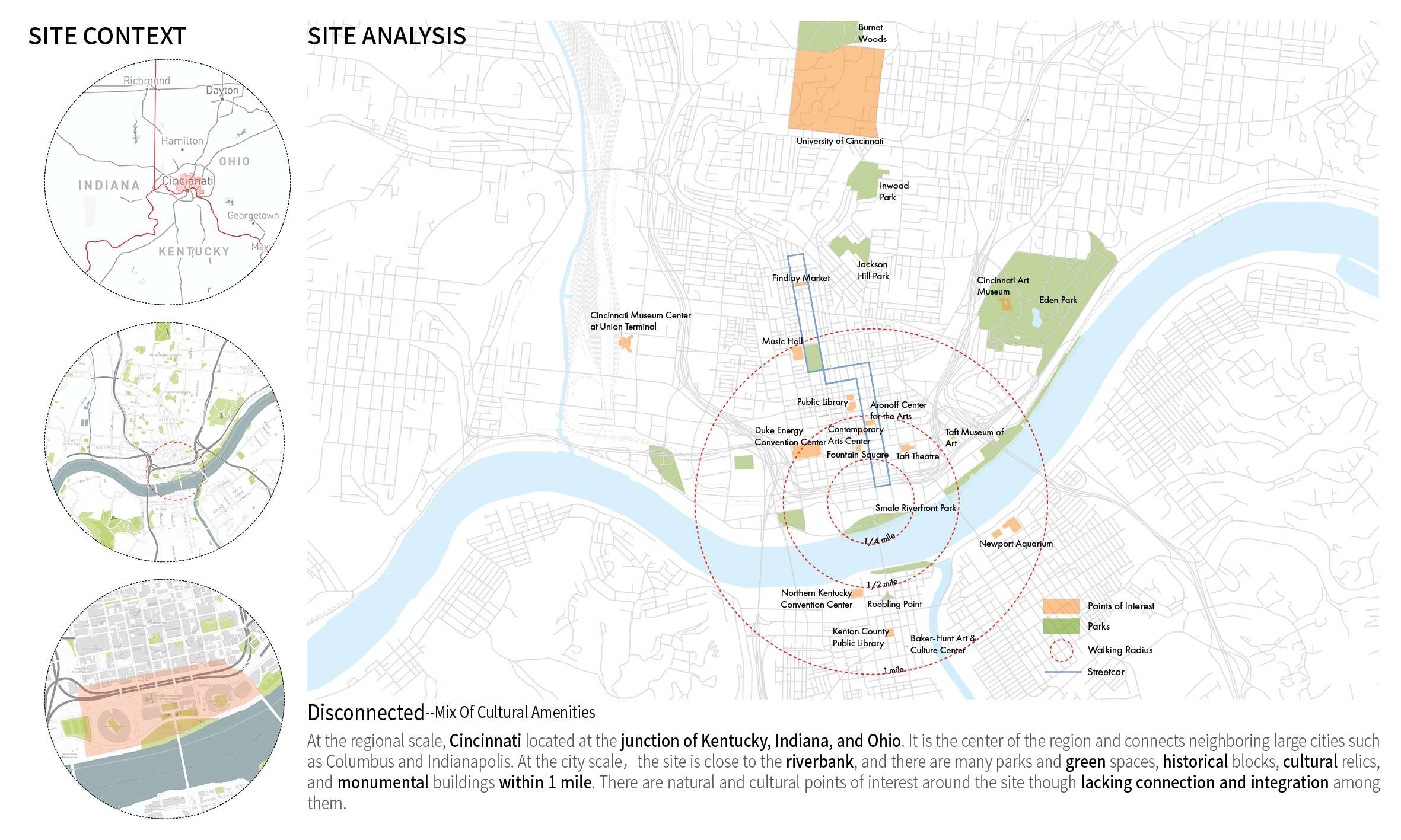
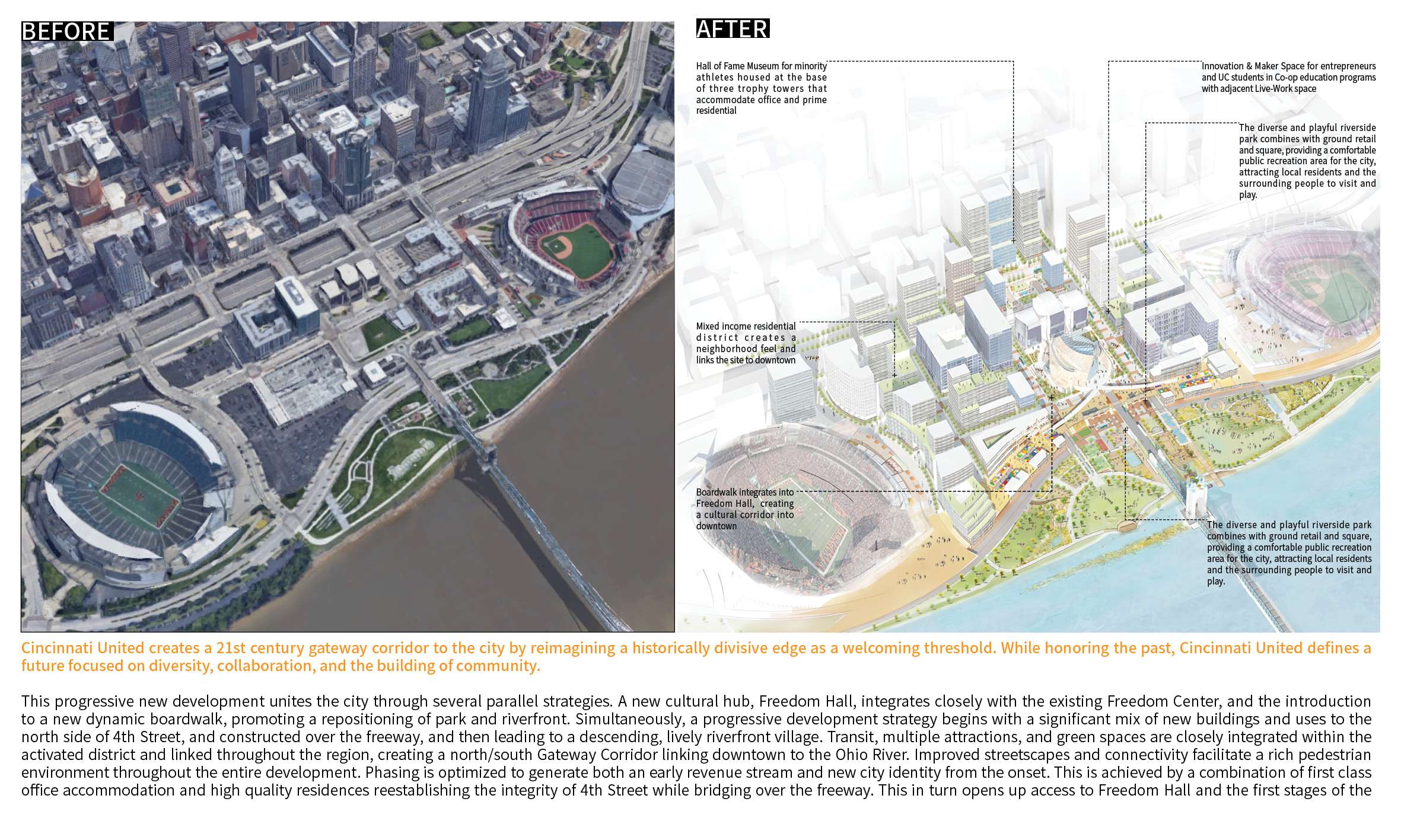
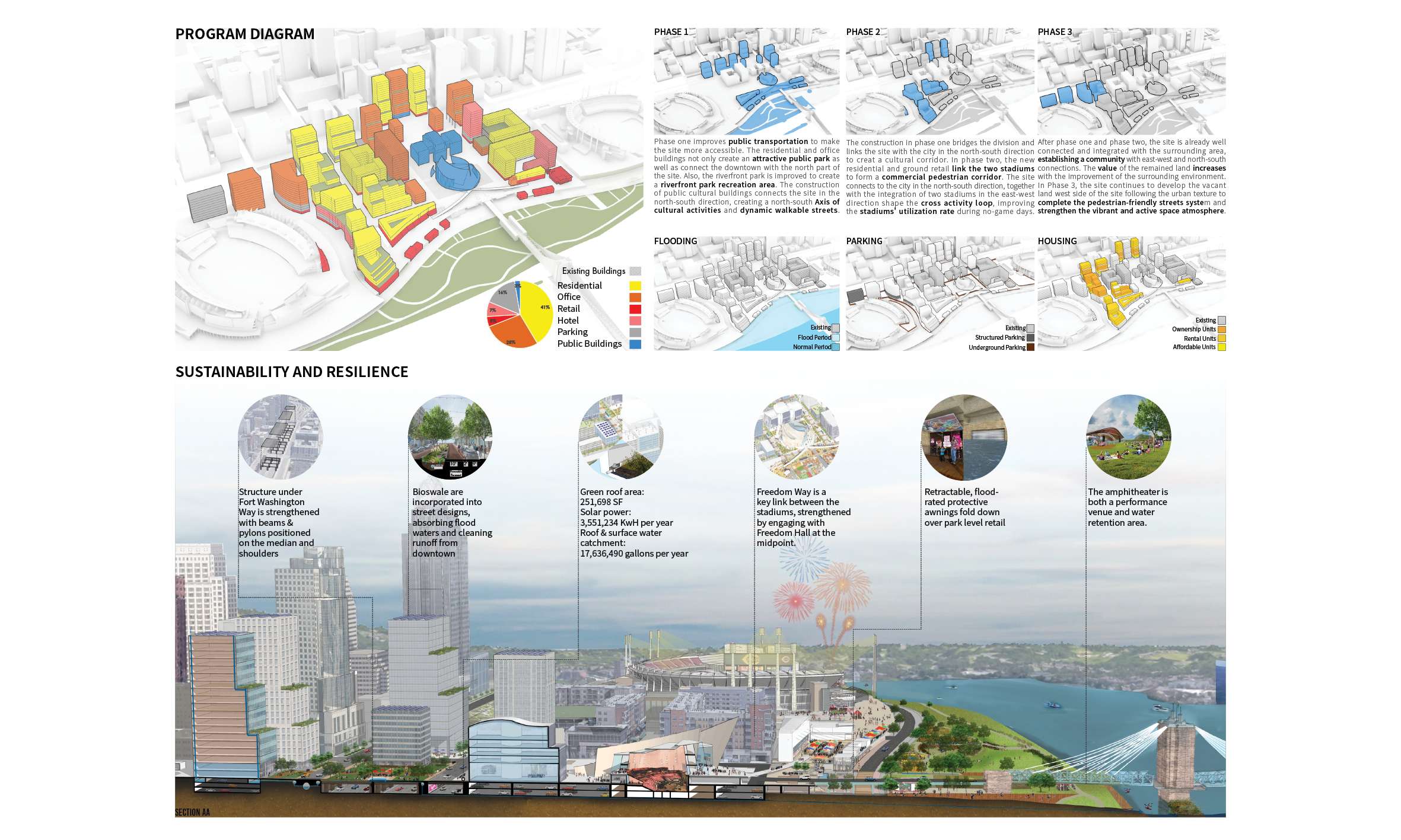
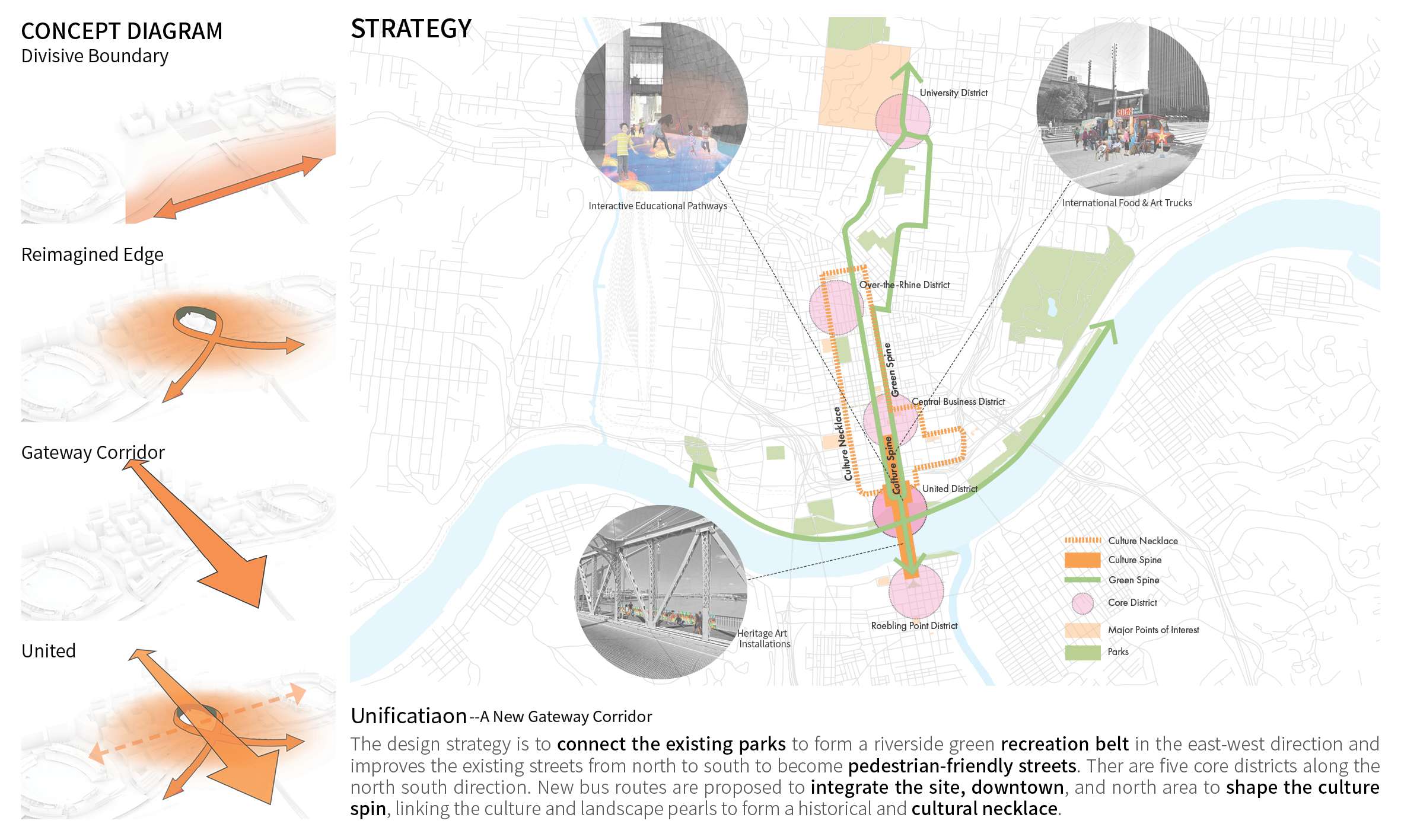
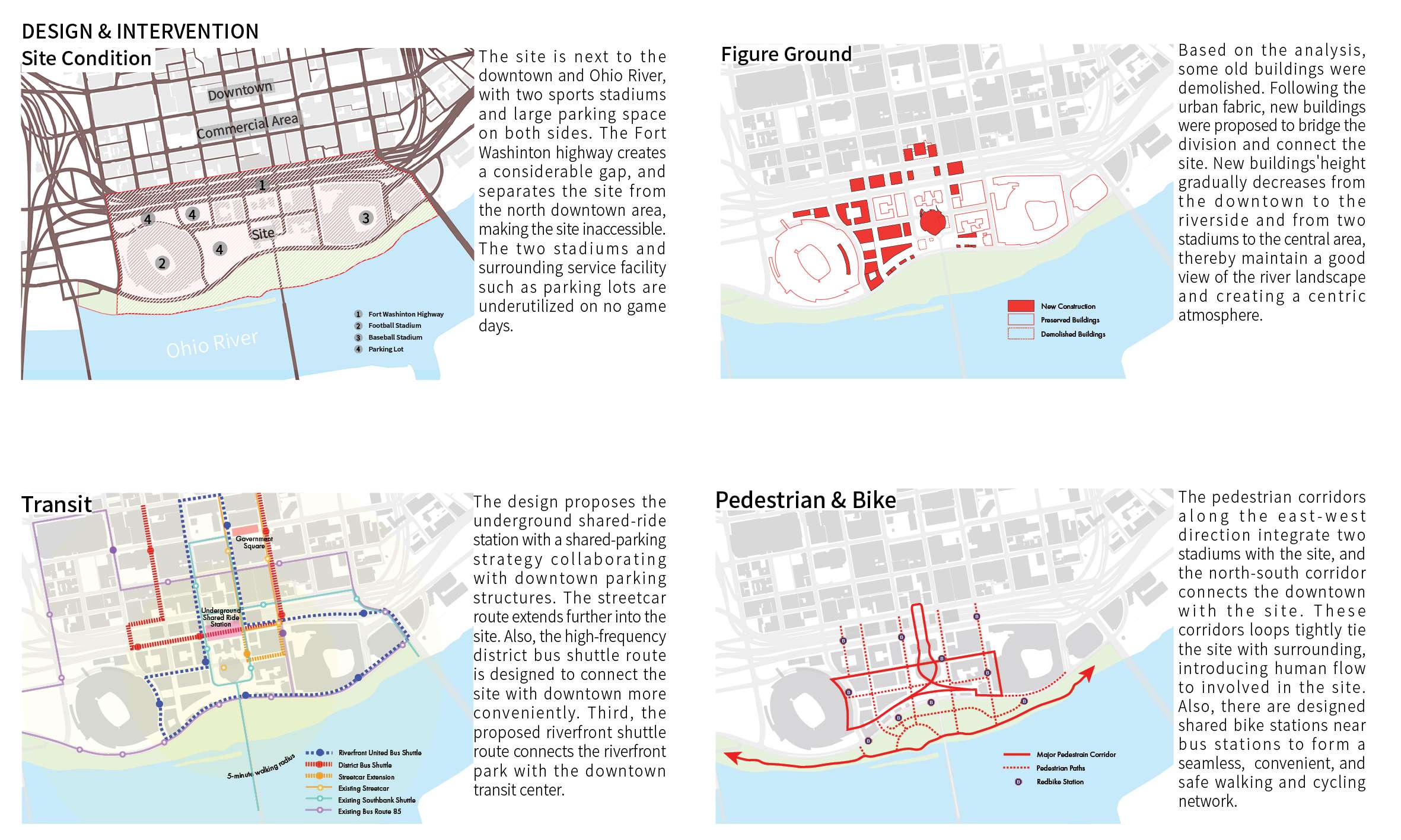
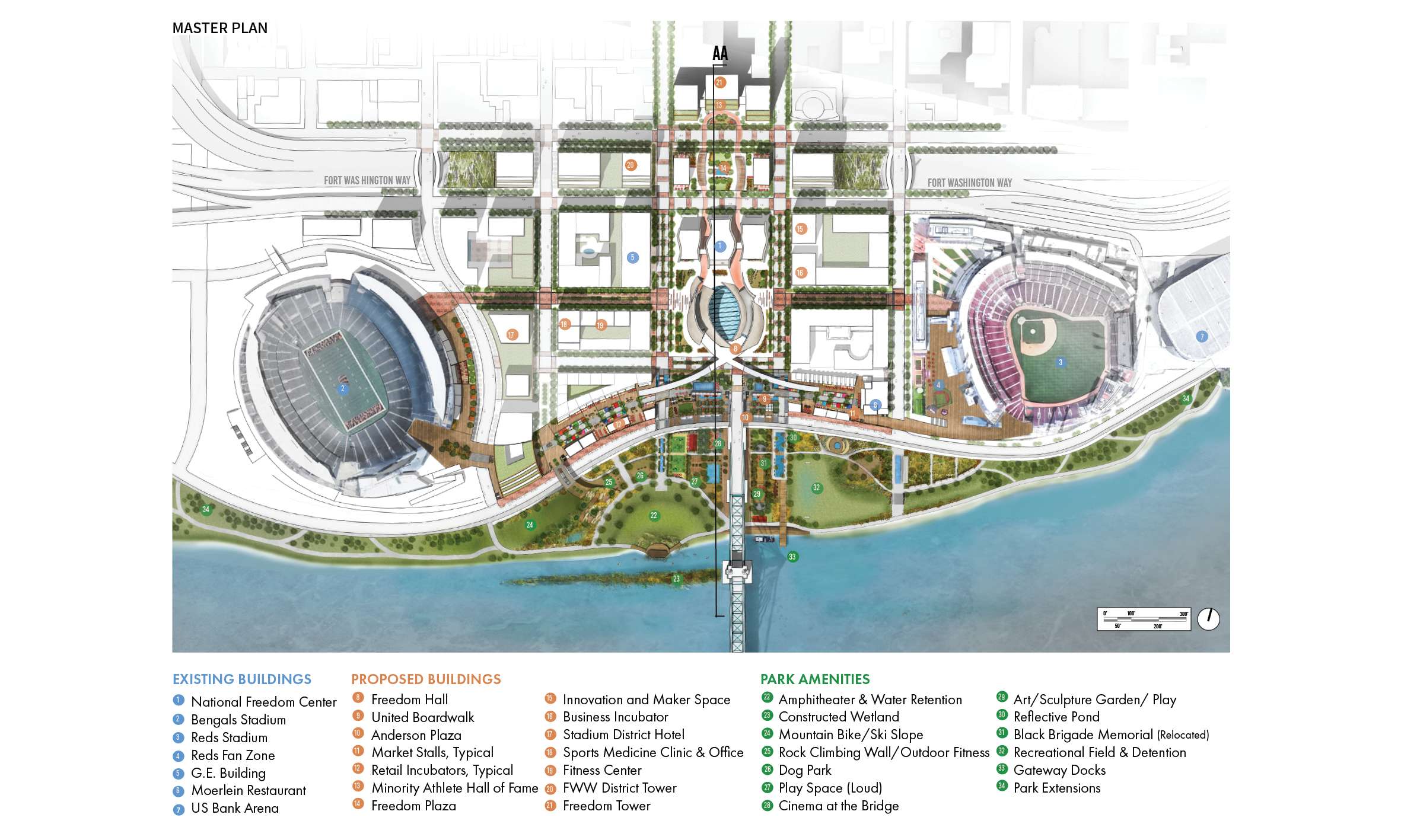
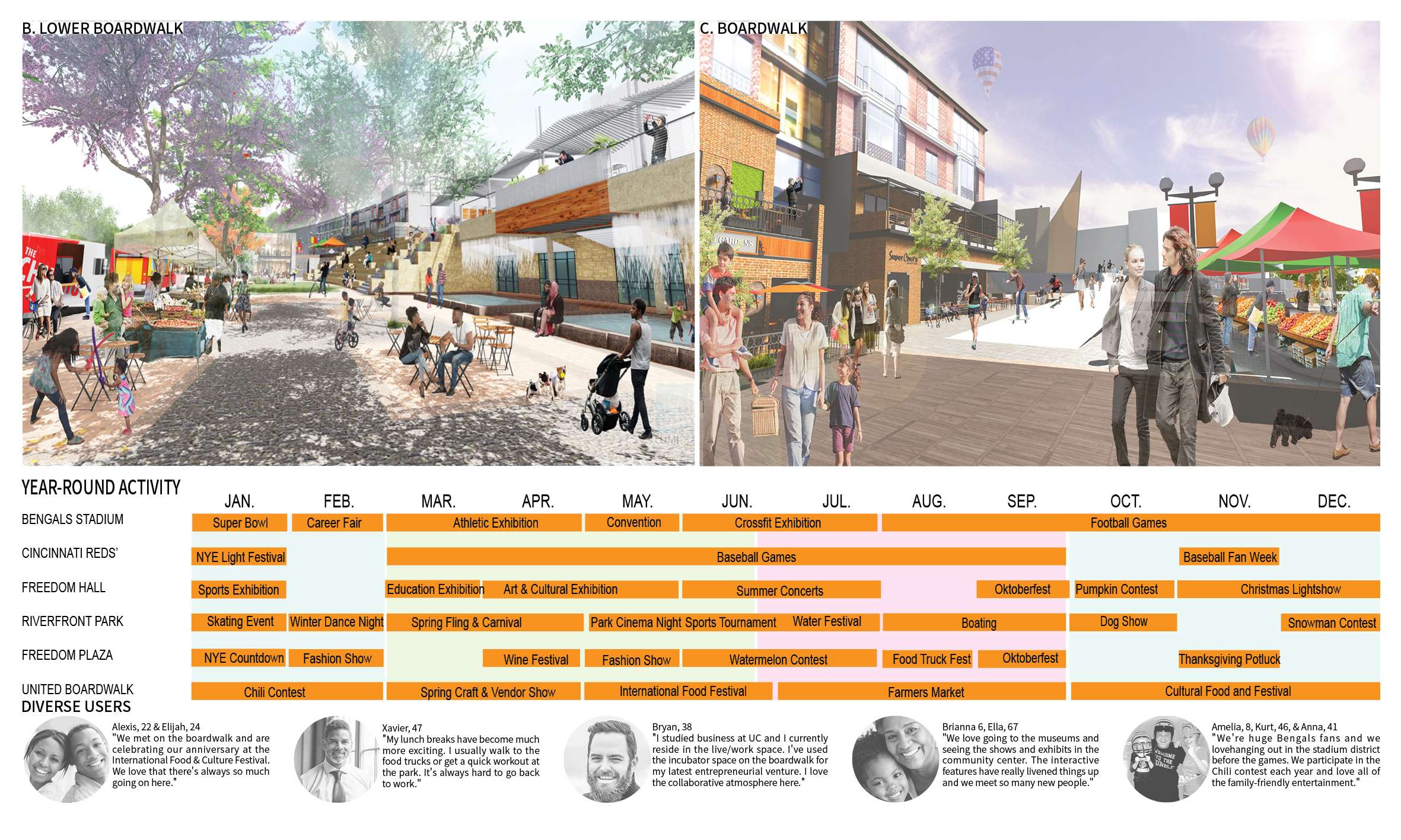

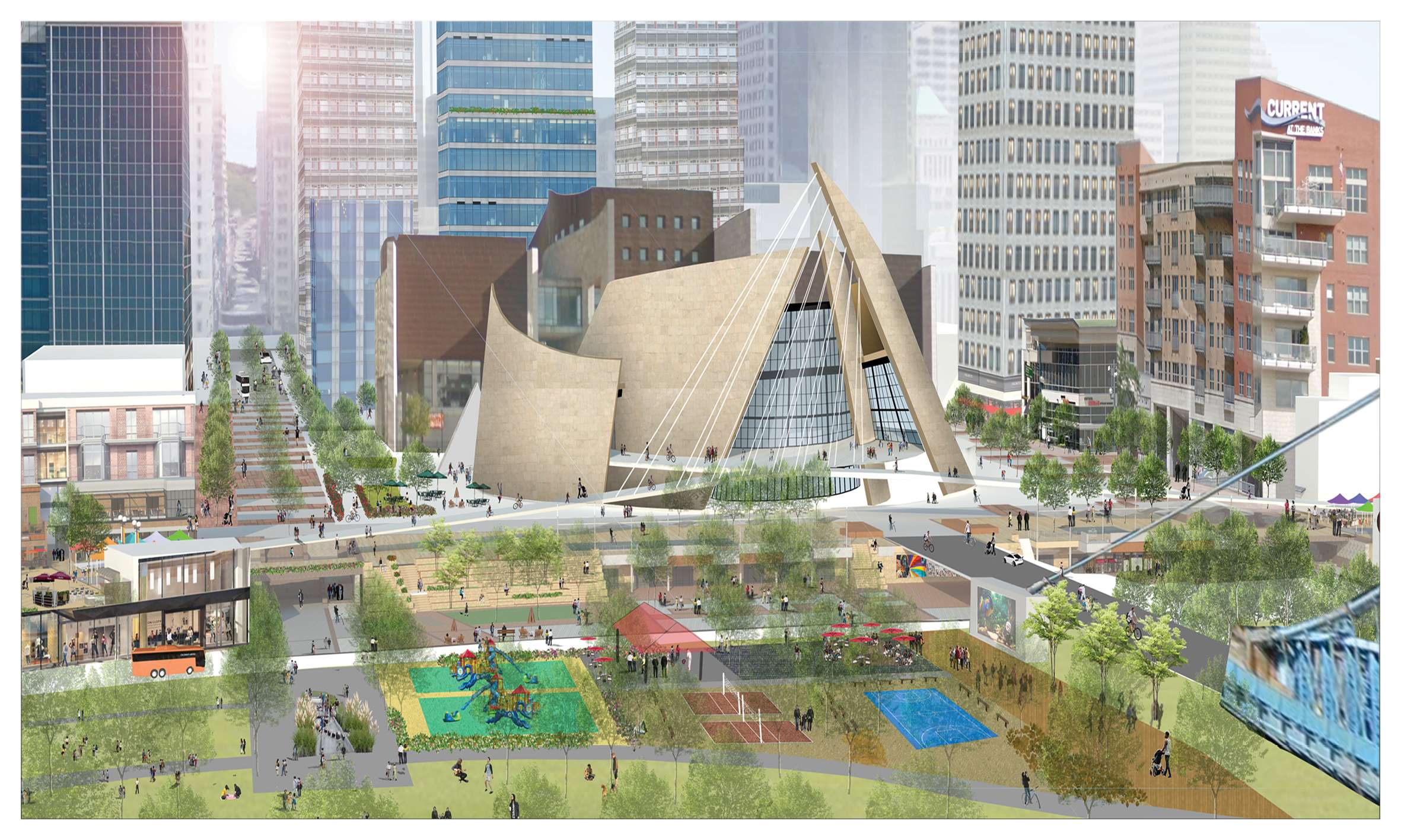


Cincinnati United
Cincinnati United
Cincinnati United
Cincinnati, Ohio can be characterized by its threshold condition. The city is known as the “Gateway to the West” and shares a political boundary with Kentucky to the south. Historically, the Ohio River represented an unofficial extension of the Mason Dixon line, separating the north from the south and generating a leg of the underground railroad. Currently, our society still struggles with the same division and fear of difference that characterized that time in history. This significant separation has necessitated the redefinition of boundaries and the engagement of our differences to unite us together.
Cincinnati United seeks to reconsider the city’s southern edge as a welcoming gateway that honors the past, celebrates the future, and encourages unity and collaboration. The river boundary is reimagined as a boardwalk that hosts recreation and cultural expression for all. The boardwalk connects the site physically from east to west. A section of the boardwalk lifts above the historic Roebling bridge and anchors the site by joining with a community center. The new center is located directly across from the Underground Railroad Museum and engages with it formally. This axis of history and activity facilitates a unified corridor beginning on the Kentucky side of the river and extending into the heart of Cincinnati.
The community center hosts concerts, lectures, and exhibitions for all audiences, as well as permanent supportive programming for disadvantaged residents. Pop up installations such as heritage art pieces and international food trucks along the corridor create connections between local attractions. A mixed-use infill strategy optimizes community engagement and collaboration. The development of a dense, high-rise residential district over the FWW provides linkage from downtown to the river’s edge. Ground-level retail hosts supportive programming such as grocery and daycare to create a close-knit, walkable community.
Cincinnati United stimulates education and business through affordable live-work housing, collaboration space, and incubators. The site supports diverse commerce, from market stalls on the boardwalk to Fortune 500 office space. The creation of a vibrant stadium district engages both sports culture and wellness through a hotel space with integrated residential, a large fitness center, and sports medicine offices. A Hall of Fame museum commemorating minority athletes links the athletic district to the community and culture corridor.
Year-round recreation, sustainability, and wellness are further considered in the riverfront park. The Ohio River trail is expanded to the east and west and supports hike and bike trails. Development is lifted out of the floodplain and water on the site is absorbed in bioswales and permeable paving integrated into the street system. Roofs support water catchment, green space, and solar panels.
